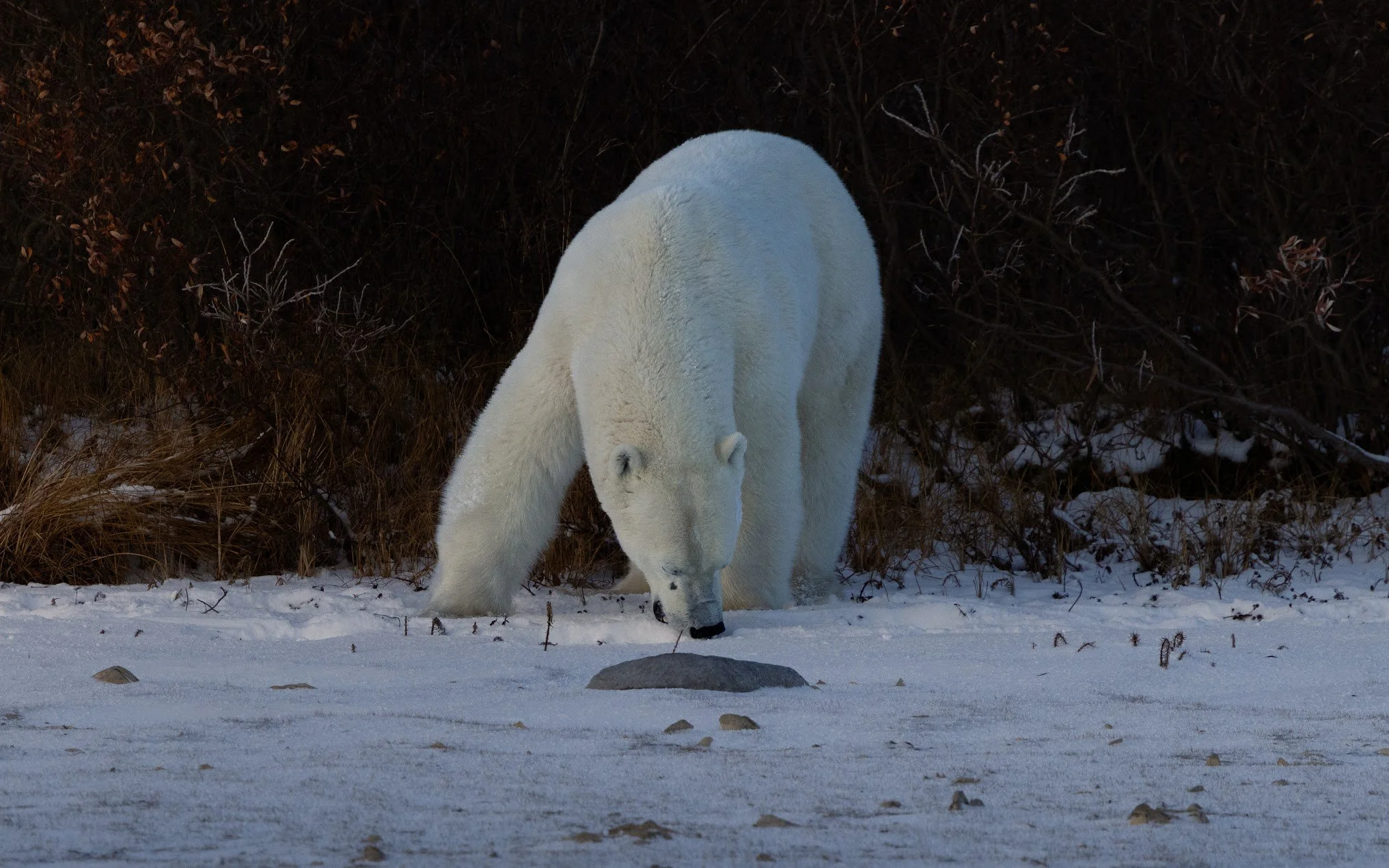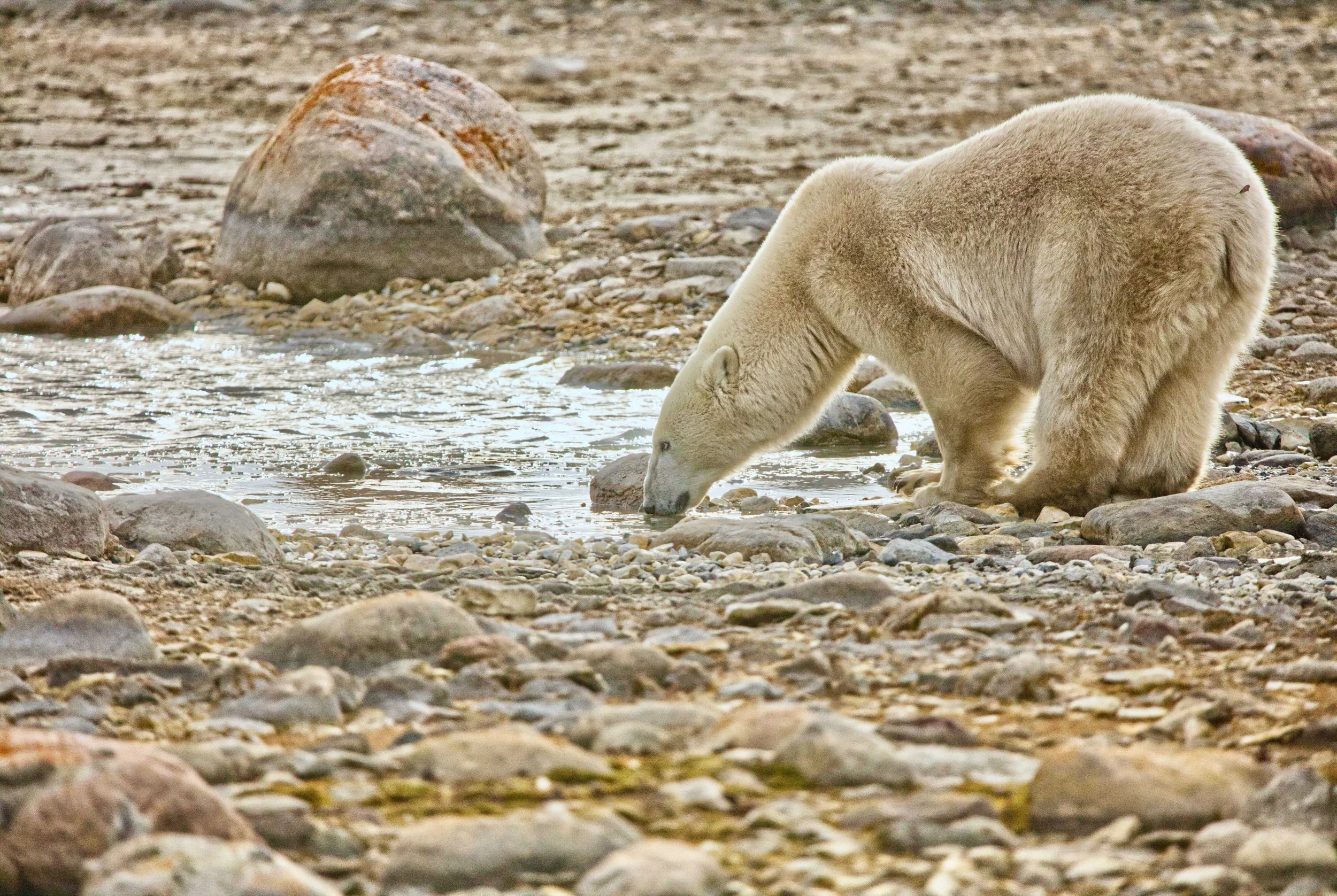How Do Polar Bears Get Their Water?
Lead Scientist Cate Collins answers a great question from one of our guests on the 2025 One-Day Polar Bear Expedition from Calgary.
“If the polar bears spend so much of their lives out on the sea ice, how do they get enough drinking water?”
Well, the answer is, of course, polar bears don’t drink water, they drink coke 😉
Just kidding, let’s get back to the science. Polar bears in Western Hudson Bay spend around seven to eight months of the year out on the sea ice. They can’t drink the salty seawater that surrounds them, so they have to find other ways to meet their water needs in this frozen, polar desert. Here’s how they do it.
Eating Snow
Polar bears will sometimes eat snow, but it’s not their first choice. Melting snow inside their bodies takes energy, which means they lose heat in the process. Researchers have observed polar bears eating snow after play fighting or sparring, but this is likely to cool themselves down rather than to rehydrate.
We were lucky to observe this behaviour on our One Day Polar Bear Expedition from Hamilton on November 7, 2025.
A polar bear eating snow after a sparring session. (Hamilton Expedition, November 7, 2025)
Freshwater Melt Pools
In spring, when temperatures rise, the snow on top of the sea ice begins to melt, forming small pools of fresh water out on the ice. These melt pools offer a good source of drinking water in the spring, but they are not an option in the middle of winter when everything is frozen solid and there is no liquid water to be found.
A bear drinking from a freshwater pond while on land near Churchill, Manitoba during the summer off the ice. (Edmonton Expedition, October 25, 2025)
From Seals
While polar bears can get some water from eating snow and drinking from freshwater pools, most of a polar bear’s water actually comes from its diet. Seals are made mostly of water: it makes up about 10% of their blubber and 70% of their muscle. But that’s not all the water they get from seals. When polar bears metabolize, or break down, fat for energy, they also produce what’s called metabolic water. This is water created inside the polar bear’s body as a byproduct of their metabolism.
For humans, only about 8-10% of our daily water needs come from our metabolism. For polar bears, it’s much higher. This is one reason why fat-rich seals are so essential to their survival.
Interestingly, this is one of the reasons polar bears are considered even more specialized than typical carnivores. Researchers call polar bears lipovores (fat eaters) because they rely so heavily on the blubber rather than the meat of the seal. Even their genes have adapted to allow them to process fatty acids more efficiently.
So, the blubber from seals not only helps the polar bear store energy and stay warm, their fat is also the most important source of water for the bears.
A polar bear feeding on what is likely a ringed seal carcass. A lucky catch during the fasting season off the ice. (Hamilton Expedition, November 7, 2025)
What about Cubs?
Polar bear cubs will stay with mom for 2.5 to 3 years after birth. During that time, they nurse and get the water and nutrients they need from their mother’s fat rich milk.
A cub-of-the-year (10 months old) nursing while on the shores of Hudson Bay awaiting the return of the sea ice.
Polar bears have adapted remarkably to life in one of the harshest environments on Earth. They have figured out not only how to meet their needs, but also how to thrive in this unforgiving environment. Just one more reason why they’re such extraordinary animals.
References
Polar Bears International. Do Polar Bears Drink Water. Retrieved November 14, 2025, from https://polarbearsinternational.org/news-media/articles/do-polar-bears-drink-water
Stirling, I. (2011). Polar bears: The natural history of a threatened species. Fitzhenry & Whiteside.
About Gold Star Canadian Tours
At Gold Star Canadian Tours, we focus on providing the worlds best travel experiences to authentically Canadian destinations. Our flagship tour is a convenient 1-day Polar Bear Expedition with dedicated non-stop charter flights from major airports directly to Churchill, Manitoba. With Gold Star Canadian Tours, the wonders of the Arctic are closer than ever. Your Adventure Awaits!




